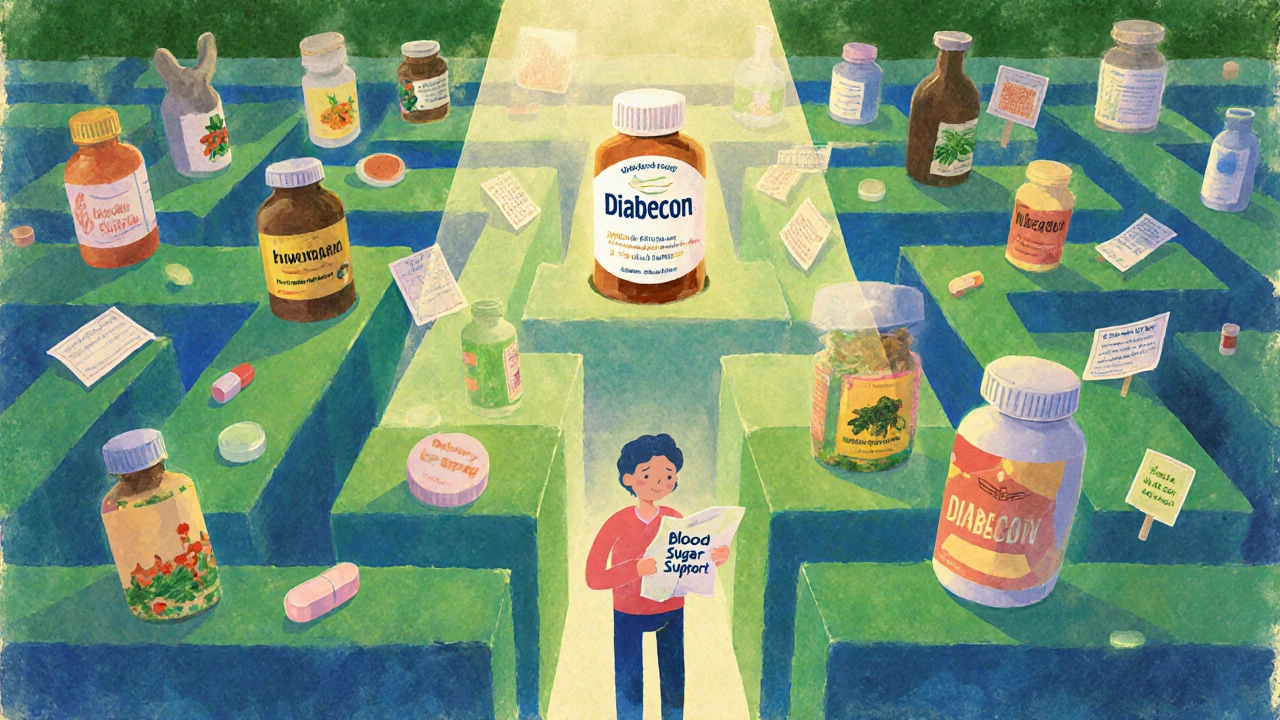Blood Sugar Control: Tips, Meds, and Tools for Stable Levels
When working with blood sugar control, the process of keeping glucose levels within a target range to prevent diabetes complications. Also known as glycemic management, it relies on diet, exercise, medication, and monitoring.
Key players like Insulin, a hormone that rapidly lowers blood glucose and Metformin, the first‑line oral drug that reduces liver glucose production are common. Modern tech such as Continuous Glucose Monitor, a sensor that provides real‑time glucose readings helps fine‑tune therapy.
Understanding how these pieces fit together is crucial. blood sugar control encompasses medication choices, nutrition plans, and device usage. Effective blood sugar control requires regular monitoring, whether by finger‑stick tests or CGM data. Continuous glucose monitor data influences insulin dosing, leading to tighter ranges and fewer lows.
Medication Landscape
When you open a prescription bottle, you’ll see a range of options. Insulin comes in rapid‑acting, short‑acting, intermediate, and long‑acting forms, each suited for different timing needs. Rapid‑acting insulin tackles post‑meal spikes, while basal insulins provide steady background coverage.
Oral agents like Metformin work by cutting liver output and improving tissue sensitivity. Other drug classes—such as SGLT‑2 inhibitors, GLP‑1 receptor agonists, and DPP‑4 inhibitors—add extra tools. Each class has its own benefit profile: weight loss, cardiovascular protection, or lower hypoglycemia risk.
Choosing the right combo often follows a simple rule: start with metformin, add a second‑line agent if A1C stays high, and consider insulin when oral meds no longer suffice. This stepwise approach matches the guidelines most clinicians follow.
Side‑effect awareness is part of control. Metformin can cause mild GI upset, which many patients manage by taking it with food or using an extended‑release version. Insulin carries hypoglycemia risk, so pairing it with a CGM or frequent finger‑sticks is advised.
Cost matters too. Generic metformin is inexpensive, while newer classes may be pricier. Insurance plans often favor older drugs, so checking formularies can save dollars while keeping control on track.
Beyond drugs, lifestyle habits shape glucose trends. A balanced plate—half non‑starchy veg, a quarter protein, a quarter whole grains—provides steady fuel. Regular movement, even a brisk 30‑minute walk after meals, boosts insulin sensitivity and blunts spikes.
Sleep quality influences hormones that regulate glucose. Poor sleep raises cortisol, which can elevate fasting sugar. Aim for 7‑9 hours of uninterrupted rest to support hormonal balance.
Stress management rounds out the picture. Stress hormones like adrenaline push glucose up, so practices such as deep breathing, meditation, or hobbies can indirectly aid control.
Monitoring devices translate these habits into data. Traditional finger‑stick meters give point‑in‑time snapshots, while CGMs paint a continuous picture, revealing trends like dawn phenomenon or post‑exercise dips. Data export features let you share readings with your care team for fine‑tuning.
When interpreting data, look for patterns rather than isolated numbers. A consistent upward trend after breakfast suggests a need for earlier insulin or a carb adjustment. Nighttime lows may require a snack or basal insulin tweak.
Technology doesn’t replace professional advice, but it empowers you to ask better questions. “My CGM shows a steady rise after lunch—should I adjust my rapid‑acting insulin dose?” is a conversation that leads to precise changes.
Education is a lifelong companion. Knowing your target range—usually 80‑130 mg/dL before meals and under 180 mg/dL two hours after eating—helps you gauge success. Keep a log of meals, activity, and meds to spot connections.
Ultimately, mastering blood sugar control is a team effort: you, your healthcare provider, and the tools you trust. Below you’ll find detailed articles that dive into specific meds, compare options, explain monitoring tech, and offer practical steps to keep your glucose where you want it.

- 4 Comments
Explore an in‑depth comparison of Diabecon versus top diabetes supplements, covering ingredients, efficacy, safety, cost, and who should use each product.
